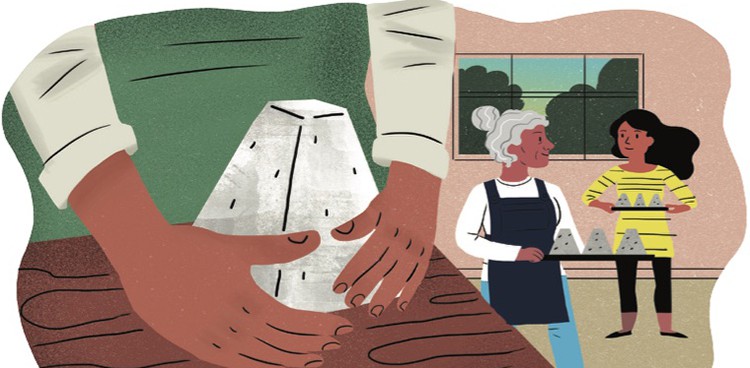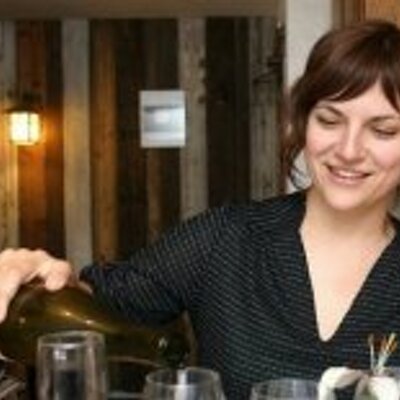
After months of attempting to contact the seemingly unreachable Mary Holbrook—owner of Sleight Farm in Somerset, England—I found myself standing next to the elusive cheesemaker, elbows-deep in custardy, white goat’s milk curds. Wearing a denim shirt with sleeves rolled high, Holbrook ran her fingers through the firming milk, demonstrating how to cut cardoon rennet–set curds so they stayed just plump enough for her signature semi-soft Cardo wheels. Smiling, I thought about how lucky I was to dive into a vat alongside one of the UK’s best cheesemakers.
Holbrook is known for her adventurous spirit and devotion to international cheese traditions. She started making Loire Valley-style goat’s milk cheese in the 1980s—a time when aged goat cheese was as rare as a cheddar-hating Englishman. She traveled to Portugal to learn how to make cardoon (thistle) rennet while the rest of her country’s cheesemakers stuck to pre-made animal or microbial rennet. Today, the septuagenarian still makes cheeses by intuition, not with pH meters. And she does so while managing Sleight Farm and working once a week at Neal’s Yard Dairy, London’s legendary artisanal cheese shop.
As a writer and cheese educator, I had embarked on a two-and-a-half-month tour of the British Isles in 2014, hoping to shadow game changers such as Holbrook. I imagined my three-day visit to Sleight Farm might entail washing the undersides of vats, maybe cleaning a stall or two. But after breakfast and coffee clouded with raw goat’s milk on my first day, Holbrook threw me into the deep end, tasking me with one of the most intimidating jobs for a newbie: ladling curds for her delicate, raw-milk Tymsboro into pyramid-shaped forms. If I jiggled the ladle too vigorously and released too much whey, I could ruin her cheese. My hands shook, but Holbrook wasn’t worried. All curds survived that day.
Next she asked her then-assistant cheesemaker, Rosie Teare, to show me how to dust older Tymsboros with vegetable ash—when applied properly, it seasons the cheese and encourages rind growth—and promptly left me alone with 100 pyramids. Holbrook also taught me how to tell when lactic acid-set curds are ready—by taste (when yogurty) and texture (when wobbly). Later, as we moved cheeses from rack to rack in the aging rooms, she answered my endless questions. “How much humidity did she want in the fridges? How did she keep good bacteria happy and healthy yet the bad ones at bay?” (She preferred Penicillium candidum on the Tymsboro rinds, and discouraged developing Geotrichum candidum by patting down the cheeses.)
During my stay, I helped make, flip, or ash almost every cheese in Holbrook’s repertoire. (And, oh, did we clean—70 percent of a cheesemaker’s job is cleaning, Teare informed me.) On my last day at Sleight, as we lunched on ham from Holbrook’s whey-fed British Lop pigs, Holbrook announced we would make an extra batch of cheese not on the schedule—thistle-coagulated, washed-rind Cardo. She had enough award-winning rounds in the aging rooms but knew how I longed to see this particular process in person. Starry-eyed, I washed up and joined her at the vat.
By teaching me about time-honored customs in her dairy just as Portuguese producers had done for her decades before, Holbrook introduced me to new people, cheeses, and traditions. The thing I’ve always loved about the cheese community—besides, you know, the wheels and wedges—is how welcoming rock-star makers (or in Holbrook’s case, the “godmother of English goat cheese”) take the time to pass along the joys of the craft.
I strive to share that same passion with my cheesemaking students back home in California. I’m also working on a book about cheese in the British Isles—and there’s an entire chapter dedicated to my memorable stint learning French and Iberian techniques from a certain English trailblazer.




